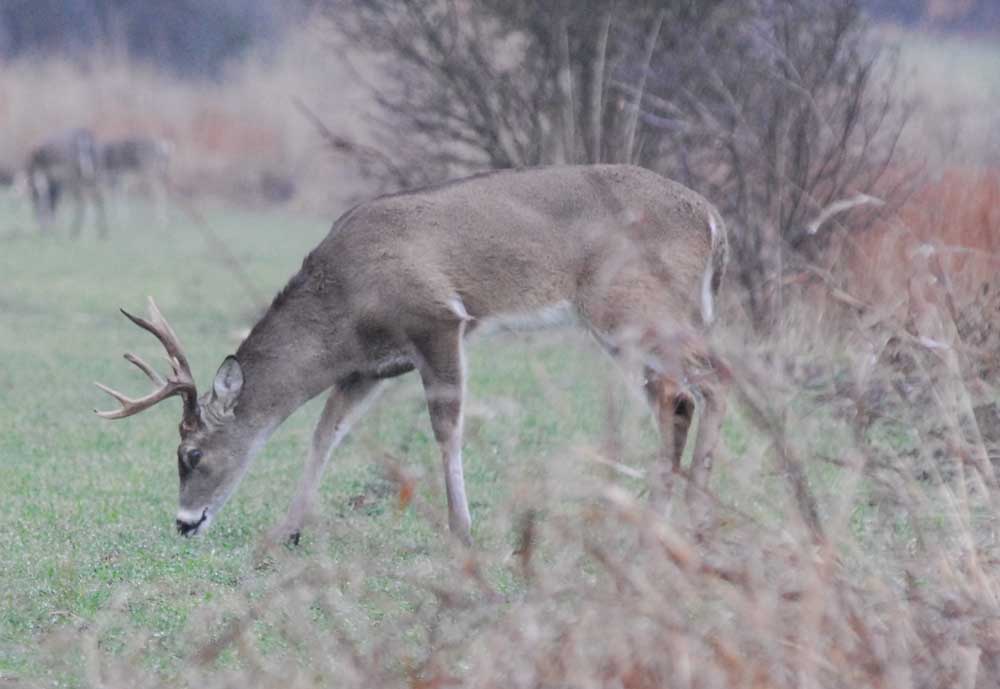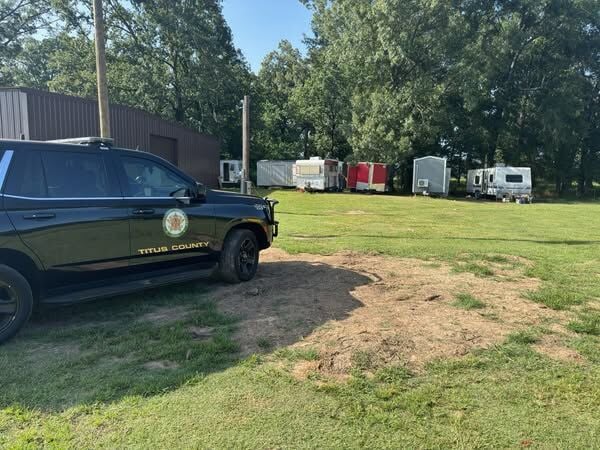Texas Panhandle wildfires: Officials describe devastating damage, urge precaution as inferno continues
Published 5:00 pm Friday, March 1, 2024

- Texas Wildfires (copy)
The largest wildfire in Texas history has burned more than 1 million acres in the Panhandle and continues raging Friday. At least two people have died. It’s also killed thousands of livestock, destroyed crops and gutted infrastructure
The Smokehouse Creek fire is the largest of multiple wildfires burning in the region. Dry and windy weather this weekend could fuel the infernos and make it more difficult for firefighters to battle the blazes. Officials in some areas are only now beginning to assess the damage. Gov. Greg Abbott has issued a disaster declaration for 60 counties and traveled to the region Friday.
Abbott describes “utter devastation” in Texas Panhandle
In his first update from the Texas Panhandle since the region was engulfed in flames earlier this week, Gov. Greg Abbott described a scene of total destruction throughout multiple counties.
“When you look at damages that have occurred here, it’s just gone, completely gone, nothing left but ashes on the ground,” Abbott said. “Those who are affected by this have gone through utter devastation.”
Abbott said that according to a premature assessment of the region, 400 to 500 structures have been destroyed. Officials said 90% of Roberts County, about 80 miles north of Amarillo, is burned. Lisa Johnson, county judge in neighboring Hemphill County, said at least 109 structures are burned in that county, but there are no active fires in the county as of Friday afternoon.
Abbott confirmed one death from the wildfires, crediting firefighters’ response for preventing more deaths. Officials said five firefighters were injured on the first night with burns and other injuries.
He said 14 state agencies and 45 local agencies are on the ground responding to the fires that have covered more than 1 million acres. He also said he plans to make a federal disaster declaration request for additional aid, but that requires county leaders to continue to assess damages to get an accurate estimate of the cost.
Abbott said emergency responders will continue to monitor for potential new fires throughout the weekend, but there is also a need for recovery support, including debris removal and management and help finding immediate temporary housing for those who have lost homes.
— Kate McGee
Panhandle residents urged to “remain vigilant” as windy, fire prone conditions expected this weekend
Gov. Greg Abbott is warning Texas Panhandle residents that they cannot let their guard down as “enormous potential fire dangers” persist into the weekend.
“Winds are going to pick back up, the right elements for a fire will be around,” the governor said after flying to the Panhandle on Friday. “As much as everyone has gone through … all of us must remain vigilant to make sure all steps are taken to continue to prevent loss of life, to contain fires, to minimize encroachment upon homes and cities across the entire region.”
As of Friday afternoon, the Texas A&M Forest Service said just 15% of the Smokehouse Fire is contained, but urged people not to look at containment percentages as a sign the fires are over.
“I do not want that to lead you to a false sense of security,” Nim Kidd, chief of the Texas Division of Emergency Management, told reporters. “It’s going to be a very active weekend.”
Kidd noted that the perimeter of the Smokehouse Fire equates to around 550 miles. He urged Panhandle residents to avoid activities this weekend that could cause a potential fire.
“Over 90% of wildfires are human caused,” Kidd said. “No new starts. We don’t want to divert resources from our existing fires onto a new start fire.
— Kate McGee
Wildfires threaten Texas’ agriculture economy
The state’s agriculture has been devastated as this week’s wildfires have already killed thousands of livestock, destroyed crops and gutted infrastructure.
The agriculture industry, a big driver of the state’s economy, was already facing pressures from prolonged and widespread drought that forced ranchers to manage smaller herds, contributing to a decrease in beef production nationally. The ongoing wildfires are another blow as many ranchers tried to rebuild their herds and operations during the cooler months of the year.
Over 85% of the state’s cattle population is located on ranches in the Panhandle, according to the Texas Department of Agriculture. In 2021, agriculture accounted for 9% of Texas’ gross state product, adding $186.1 billion to the state’s economy, according to Texas A&M’s Agrilife Extension report. While numbers on how many cattle were lost in the fires are unknown, experts say ranchers will face significant economic pressure from the damage.
“Even if you were fortunate to be able to get your animals out fast enough, the economic impact on those affected are big,” said David P. Anderson, a professor of agricultural economics and extension livestock economist with Texas A&M University AgriLife Extension.
— Alejandra Martinez
Officials mount relief efforts, continue urging preparation and prevention
Smoke from wildfires alone can pose a serious health threat, especially for kids, older adults and those with chronic heart or lung disease and asthma. To stay safe during a wildfire, it’s recommended to close all vents and protect all of your home’s openings to prevent embers from penetrating your home. Evacuate immediately if authorities tell you to do so and wait for officials to say it’s safe before returning home.
Officials are still assessing the extent of the wildfires’ destruction in the Panhandle and are asking people whose property has been damaged to report it through an online survey to help identify immediate resource needs.
The Texas Panhandle Volunteer Organizations Active in Disaster (VOAD) is helping coordinate volunteering in the area through an online interest form and several organizations have set up funds or are taking donations to help affected residents, including farmers and ranchers. See more wildfire safety tips and ways to support local residents here.
— María Méndez and Maria Probert Hermosillo
Texans still don’t know the extent of damage
MIAMI, Texas — It’s been 18 years since Mitchell Locke lived through what had long been the worst wildfire in Texas history. Now, he’s living through an even bigger one.
As the top elected official in Roberts County, Locke is helping navigate the impacts of the Smokehouse Creek Fire, which has already burned 1 million acres in the Texas Panhandle. It set a new record this week for the largest wildfire in state history. About 85% of Roberts County has been affected, but the full extent of damages aren’t known yet.
Locke is among an unknown number of West Texans who witnessed towering smoke and darkened skies as a series of wildfires crept closer to their towns. Locke’s home is still standing, but his family lost part of its ranch. He doesn’t know how many of his cattle died.
“You have to just kind of give up and know you’re going to lose some,” Locke said. “Then pray and cross your fingers that they’ll survive, then check the next day.”
— Jayme Lozano Carver and Alejandra Martinez
Record winter heat, dry air helped drive Panhandle fire risk
It’s not unusual for there to be fire risk in the winter in Texas, when vegetation is dead, dormant or dry. Most of the area that has burned is not in a drought, according to the U.S. Drought Monitor. But scientists know that the hot, dry weather that set the stage for the spread of the Panhandle falls in line with the type of weather that climate change is making more likely. Drier and warmer air dry out vegetation that fuels fires. (There isn’t clear scientific consensus yet on how or whether climate change affects wind.)
“If climate change had a role, it was in the fire weather itself, having record-setting temperatures on Monday combined with low humidity and then strong winds on Tuesday and low humidity,” Texas State Climatologist John Nielsen-Gammon said.
Climate change attribution science — or the process of saying to what extent human-caused climate change fueled an extreme weather event — is an evolving field. It typically takes researchers time to parse out how much of the greenhouse gasses pumped into the air as humans burn fossil fuels have contributed to the severity of one storm or another.
But Climate Central has developed a tool for assessing day-by-day how much climate change is affecting temperatures. Their method found that the heat on the day the fires started was at least three times more likely than it would have been if human-caused climate change weren’t occurring.
“If you get more warm, windy weather for a longer period, then there’s a better chance of that lining up with ignitions,” said Dylan Schwilk, an associate professor in the department of biological sciences at Texas Tech University.
— Emily Foxhall
This article originally appeared in The Texas Tribune at https://www.texastribune.org/2024/03/01/texas-wildfire-live-updates/. The Texas Tribune is a member-supported, nonpartisan newsroom informing and engaging Texans on state politics and policy. Learn more at texastribune.org.






